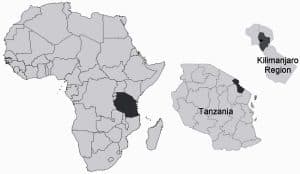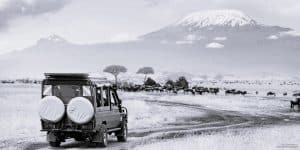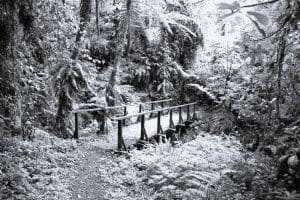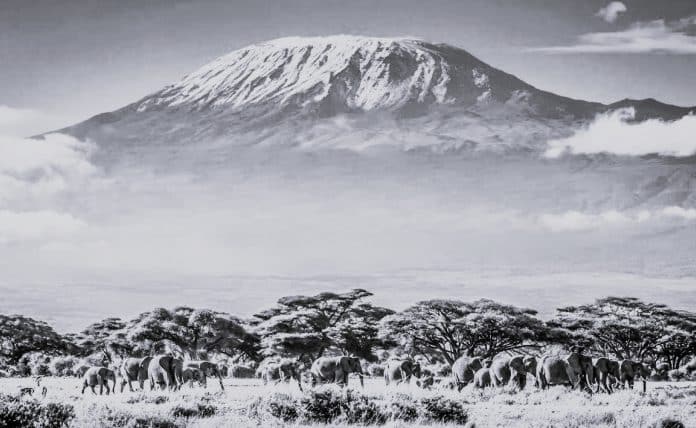Decoding the Mystery: Is Mount Kilimanjaro in Kenya or Tanzania?
Are you ready to unravel the mystery of Mount Kilimanjaro’s whereabouts? As one of Africa’s most iconic landmarks, this majestic mountain has captivated adventurers and explorers for centuries. However, there seems to be a debate surrounding its location. Is Mt Kilimanjaro in Kenya or Tanzania ? Join us on this journey of discovery as we delve into the geographical facts and cultural nuances that surround this enigmatic peak.
Mount Kilimanjaro is undoubtedly a crown jewel of East Africa, towering high above the surrounding landscapes. Its snow-capped peaks and breathtaking vistas have attracted thousands of climbers seeking the ultimate challenge. But while it is clear that Mount Kilimanjaro falls within the borders of East Africa, the question of which country can claim this natural wonder as its own is contested.
Historical and cultural significance of Mount Kilimanjaro
As we answer the question, is Mt Kilimanjaro in Kenya or Tanzania ? It’s necessary to also know the historical and cultural significance Mount Kilimanjaro holds to both Kenya and Tanzania. The mountain has long been revered by the indigenous people of East Africa, serving as a sacred site and a source of inspiration. The Chagga people of Tanzania and the Maasai people of Kenya have rich cultural traditions and legends associated with the mountain.
For the Chagga people, Mount Kilimanjaro, known as “Kilema Kyaro” in their language, is considered a holy place where their ancestors are believed to reside. They have developed a deep spiritual connection with the mountain, and it plays a central role in their rituals and ceremonies. Similarly, the Maasai people of Kenya view Mount Kilimanjaro as a symbol of strength and resilience, often referring to it as “Ol Doinyo Oibor” or “Mountain of God.”
It’s clear that the question, ” is Mt Kilimanjaro in Kenya or Tanzania ?” many times hardly matters because both Kenya and Tanzania deeply revere this mountain. However, the historical significance of Mount Kilimanjaro extends beyond the indigenous communities. European explorers and adventurers, such as Hans Meyer and Ludwig Purtscheller, played a crucial role in popularizing the mountain in the late 19th century. Their successful summit of Mount Kilimanjaro captured the world’s attention and sparked a wave of interest in climbing the mountain.
Geographical location of Mount Kilimanjaro

Mount Kilimanjaro is located in East Africa, near the border between Kenya and Tanzania. Geographically, it lies approximately 330 kilometers (205 miles) south of the equator. The mountain is situated within the Kilimanjaro National Park, a protected area that encompasses an area of approximately 1,688 square kilometers (652 square miles).
When answering the question: is Mt Kilimanjaro in Kenya or Tanzania ? It should be noted that the mountain is part of the larger East African Rift System, which stretches over 3,000 kilometers (1,864 miles) from the Red Sea to Mozambique. Mount Kilimanjaro is a stratovolcano, consisting of three volcanic cones: Kibo, Mawenzi, and Shira. Kibo, the highest peak, reaches an elevation of 5,895 meters (19,341 feet) above sea level, making it the highest mountain in Africa.
Mount Kilimanjaro in Kenya: Arguments and evidence
The claim that Mount Kilimanjaro is in Kenya is based on several arguments and evidence put forth by proponents of this view. One of the main arguments is the proximity of the mountain to the Kenyan border. The northern slopes of Mount Kilimanjaro are located just a few kilometers from the border with Kenya, leading some to argue that it should be considered part of Kenyan territory.
Another argument that has caused many to ask the question, is Mt Kilimanjaro in Kenya or Tanzania ? stems from the fact that the Maasai people, who live in the vicinity of Mount Kilimanjaro, have historically occupied lands in both Kenya and Tanzania. The Maasai have strong cultural ties to the mountain and consider it a part of their ancestral homeland. This has led some to claim that Mount Kilimanjaro should be considered a shared heritage between the two countries.
In terms of historical evidence, there are accounts of early European explorers referring to Mount Kilimanjaro as being in Kenya. For example, the German explorer Gustav Fischer, who visited the mountain in the late 19th century, referred to it as “Kenya Mountain.” However, it is worth noting that these accounts are not universally accepted and have been subject to interpretation.
Mount Kilimanjaro in Tanzania: Arguments and evidence
When answering the question: is Mt Kilimanjaro in Kenya or Tanzania ? It should be noted that the prevailing view and official stance is that Mount Kilimanjaro is located in Tanzania. The primary argument in support of this view is based on the current international borders and the delineation of territories between Kenya and Tanzania. The border between the two countries was established during the colonial period and has been recognized and accepted by the international community.
The geographical evidence also supports the notion that Mount Kilimanjaro is in Tanzania. The entire mountain, including all three volcanic cones, falls within the borders of Tanzania. The Kilimanjaro National Park, established in 1973, further solidifies Tanzania’s claim to the mountain. The park is managed by the Tanzanian government and is recognized as a UNESCO World Heritage Site.
Furthermore, as a way of shedding more light on the question, is Mt Kilimanjaro in Kenya or Tanzania ? It should also be noted that the majority of climbers and tourists who visit Mount Kilimanjaro access it through Tanzania. The town of Moshi, located in northern Tanzania, serves as the gateway to the mountain and is a popular starting point for treks to the summit. The infrastructure, logistics, and tourism industry supporting Mount Kilimanjaro are primarily centered in Tanzania, further reinforcing its association with the country.
The official stance on the location of Mount Kilimanjaro
The official stance, as recognized by the international community, is that Mount Kilimanjaro is located in Tanzania. The border between Kenya and Tanzania was established through diplomatic negotiations and has been respected by both countries. The United Nations, African Union, and other international organizations recognize Tanzania’s sovereignty over the mountain.
It is important to note that the debate: is Mt Kilimanjaro in Kenya or Tanzania ? is primarily a matter of historical and cultural interpretation rather than a territorial dispute between Kenya and Tanzania. Both countries acknowledge the mountain’s significance and its value as a source of tourism and national pride.
Impact on tourism and local economies

The debate over the location of Mount Kilimanjaro has had a significant impact on tourism and the local economies of both Kenya and Tanzania. Both countries have recognized the economic potential of the mountain and have invested in infrastructure and services to cater to climbers and tourists.
In Tanzania, despite the ongoing debate, is Mt Kilimanjaro in Kenya or Tanzania ? the tourism industry centered around Mount Kilimanjaro generates substantial revenue for the country. The mountain attracts thousands of climbers each year, providing employment opportunities for local guides, porters, and support staff. The influx of tourists also boosts the local economy through accommodation, transportation, and other related services.
In Kenya, while Mount Kilimanjaro may not fall within its borders, the mountain’s proximity has led to the development of tourism activities and services in the surrounding areas. The allure of the mountain attracts visitors to Kenya, who may then explore other national parks and attractions in the country. This indirectly benefits the local economies and communities in the region.
Climbing Mount Kilimanjaro: Requirements and logistics
Irrespective of the answer to the question, is Mt Kilimanjaro in Kenya or Tanzania ? One thing every tourist that wants to take on the challenge of Kilimanjaro should know is that Climbing Mount Kilimanjaro is an endeavor that requires careful planning and preparation. The mountain offers several routes, each with its own level of difficulty and scenic beauty. Before embarking on a climb, climbers are advised to undergo physical training and acclimatization to the altitude.
A successful summit of Mount Kilimanjaro requires a combination of physical fitness, mental resilience, and proper equipment. Climbers should be prepared for extreme weather conditions, including freezing temperatures and strong winds. It is essential to have a qualified guide and a support team to ensure safety and navigate the mountain’s diverse terrain.
One thing intending climbers should note when asking the question, is Mt Kilimanjaro in Kenya or Tanzania ? Is that irrespective of the route they decide to go through, permits and fees are required to climb Mount Kilimanjaro, and these are typically obtained through licensed tour operators. The fees contribute to the conservation efforts and the maintenance of the mountain’s infrastructure. It is important for climbers to follow the guidelines and regulations set by the national park authorities to minimize the impact on the environment and preserve the mountain for future generations.
The debate’s impact on conservation efforts

The debate over the location of Mount Kilimanjaro has sparked discussions regarding the conservation efforts and the sustainable management of the mountain. Regardless of its exact location, it is crucial to protect the natural resources and fragile ecosystems of the mountain.
Despite the ongoing debate, is Mt Kilimanjaro in Kenya or Tanzania ? Both Kenya and Tanzania have made significant efforts to preserve the environment and promote sustainable tourism practices. The establishment of national parks, such as Kilimanjaro National Park and Amboseli National Park in Kenya, has provided a framework for conservation initiatives. These efforts aim to balance tourism activities with the protection of biodiversity and the cultural heritage associated with Mount Kilimanjaro.
Collaborative efforts between Kenya and Tanzania have also been initiated to address common environmental challenges, such as climate change and wildlife conservation. Recognizing the shared responsibility for the mountain’s well-being, both countries have engaged in joint research projects and information sharing to enhance conservation efforts.
Appreciating Mount Kilimanjaro regardless of its location
In conclusion, the debate, Is Mt Kilimanjaro in Kenya or Tanzania ? is an intriguing and complex topic. While historical and cultural interpretations may vary, the official stance recognizes Tanzania as the rightful home of this majestic mountain. Nevertheless, it is important to appreciate and celebrate Mount Kilimanjaro’s significance regardless of its exact location.
Mount Kilimanjaro’s allure lies in its natural beauty, cultural heritage, and the personal challenges it presents to climbers. It serves as a symbol of unity, shared heritage, and the immense natural wonders Africa has to offer. Whether you choose to climb the mountain from Kenya or Tanzania, the experience of standing on its summit and witnessing the breathtaking views is a testament to the indomitable spirit of human exploration and our connection to the natural world.
So, as you embark on your own journey to Mount Kilimanjaro, let the debate, is Mt Kilimanjaro in Kenya or Tanzania ? fade into the background. Instead, focus on the awe-inspiring landscapes, the rich cultural traditions, and the personal growth that await you on this remarkable adventure. Mount Kilimanjaro beckons, and it is up to you to answer its call.
For more articles related to Mountains of Tanzania, click here!


































